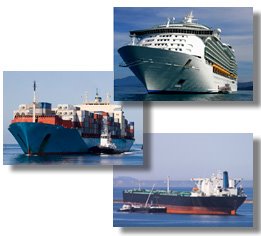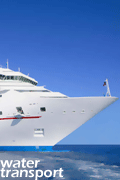Friday, April 17, 2009

Diesel engines on oceangoing vessels such as container ships, tankers, bulk carriers, and cruise ships are significant contributors to air pollution in many of our nation's cities and ports. Their emissions are expected to increase even more in the future, as our trade with other countries increases, and ship emissions will represent a larger share of our national emission inventories.
This page provides general and technical information on EPA's Clean Air Act regulations for the largest marine diesel engines as well as the U.S. government's international efforts to reduce air pollution from oceangoing vessels.
There are two types of diesel engines used on oceangoing vessels. The main propulsion engines on most oceangoing vessels are very large Category 3 marine diesel engines (those with per-cylinder displacement at or above 30 liters). Auxiliary engines on oceangoing vessels typically range in size from small portable generators to locomotive-size engines with power of 4,000 kilowatts or more. Auxiliary engines on U.S.-flagged oceangoing vessels are subject to EPA's marine diesel engine standards for engines with per-cylinder displacement up to 30 liters per cylinder.
Source: http://www.epa.gov/
This page provides general and technical information on EPA's Clean Air Act regulations for the largest marine diesel engines as well as the U.S. government's international efforts to reduce air pollution from oceangoing vessels.
There are two types of diesel engines used on oceangoing vessels. The main propulsion engines on most oceangoing vessels are very large Category 3 marine diesel engines (those with per-cylinder displacement at or above 30 liters). Auxiliary engines on oceangoing vessels typically range in size from small portable generators to locomotive-size engines with power of 4,000 kilowatts or more. Auxiliary engines on U.S.-flagged oceangoing vessels are subject to EPA's marine diesel engine standards for engines with per-cylinder displacement up to 30 liters per cylinder.
Source: http://www.epa.gov/
Labels: The U.S Take Steps Towards Reducing Air Pollution From Ships
posted by transport blogs
@ 10:25 PM
permanent link | Post a Comment
|
![]()









